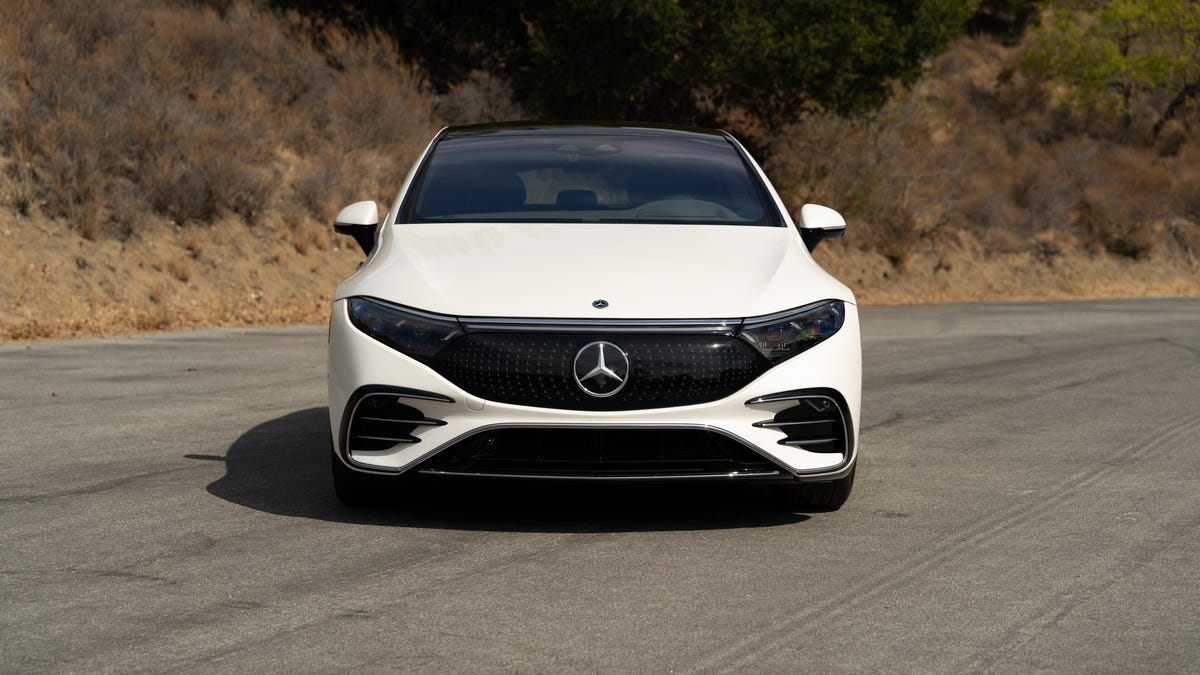Mercedes-Benz to Reduce the Lifecycle CO2 Emissions of its Vehicles by More Than 50%
The German automaker aims to achieve the ambitious goal before the end of this decade.
As part of its push to be more environmentally friendly Mercedes-Benz is aiming to slash the lifecycle CO2 emissions of its passenger cars by at least half compared to 2020 levels by the end of this decade.
To hit this ambitious target, the prestigious German automaker announced Monday that it has a number of arrows in its eco-friendly quiver. Mercedes-Benz will continue to electrify its vehicle fleet and push people to charge their EVs with green energy. The automaker is also developing more advanced battery technology, plus it's working to use recycled materials in its vehicles and build them using more renewable energy. Impressively, that last item is expected to cover more than 70% of the company's energy needs by the year 2030.
Where market conditions allow, Mercedes-Benz is pushing to have 50% of the vehicles it builds feature plug-in hybrid or fully electric powertrains by 2025, a steppingstone to going fully electric just five years later. And once drivers are in an EV, the automaker is helping them juice-up more responsibly. Green charging with at least some renewable energy is enabled at around 300,000 public stations around Europe via the Mercedes Me charging network.
Unfortunately, the supply chain and physical production account for more than half of an electric vehicle's lifecycle carbon emissions. Reducing this impact, the automaker wants to manufacture battery cells in a CO2-neutral way, something that would enable them to reduce the overall emissions of the entire pack by around 20%. Additional gains can be made by improving the production processes of battery anodes and cathodes. Once an EV reaches the end of its life, yet more carbon can be saved. Mercedes-Benz is creating a CO2-neutral battery recycling facility in Kuppenheim, Germany. Using a new hydrometallurgical process, the automaker will be able to increase the battery pack recycling rate to 96%.
Driving an eco-friendly vehicle does not mean you have to give up features or luxury, like, at all.
Aside from all that, yet more carbon can be saved by using green steel and aluminum, that is, metals made using low- or zero-CO2 production processes. Driving this point home, Mercedes-Benz has taken an equity stake in H2 Green Steel, a Swedish startup that's working to commercialize green steel, potentially as early as 2025. In addition to the metal used in a vehicle's structure or swing panels, softer materials can also help save carbon. Mercedes-Benz already offers upholstery made from 100% recycled PET bottles as well as floor covering fashioned from recovered carpeting and recycled fishing nets. Changes like these, however small, can still help green-up a vehicle.
Reducing the lifecycle carbon emissions of its products by at least 50% is an ambitious goal, but Mercedes-Benz is already taking important steps to achieve this. As of 2022, all of its own plants are producing vehicles in a CO2-neutral way and the automaker is expanding the production of renewable energy by adding wind turbines and solar panels at all its sites.
"Mercedes-Benz has a clear roadmap how to become carbon-neutral. By 2030, we want to reach the half-way mark," said Ola Källenius, chairman of the board of management at the Mercedes-Benz Group AG, in a media release. "In order to make faster progress in protecting the climate we need maximum dedication and more collaboration among governments, companies and society as a whole."


